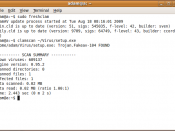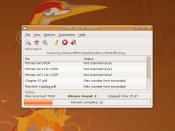This paper is designed to educate the reader on malware, spy-ware, and ad-ware. This paper will provide a definition and have specific examples of these three. This paper will also go in detail how each of them work and how to prevent and control them. If you think you know everything about the programs that run on a computer. Think again!
Has a computer froze constantly? How about programs taking long periods of time to respond? Pop-ups constantly showing up or new unusual toolbars on a browser window? If so, these may be caused from malicious malware, spy-ware or ad-ware.
First we will look at malware. From a historical perspective, malware started out slowly and rather gently. Different types of malware each have a different definition, but serve the same purpose; to use resources and to slow down the computer. Malware is any form of malicious software or unwanted source code that can run normally without the knowledge and permission of the user, causing unexpected results.
That of which could be system outages, performance problems or opening a back door for hackers.
The most common malware is the virus. A virus is usually a computer program hidden within another seemingly harmless program that produces copies of itself and inserts them into other programs or files that performs a malicious action.
Viruses fall into six main classes. The first is macro viruses. Over 75% of today's viruses are Macro Viruses. It is a type of computer virus that is encoded as a macro embedded in a document, not a program. Once a macro virus gets onto a machine, it can embed itself in all future documents that are created with an application.
Second virus is the boot sector virus. It infects the boot sector or partition table of a disk.


